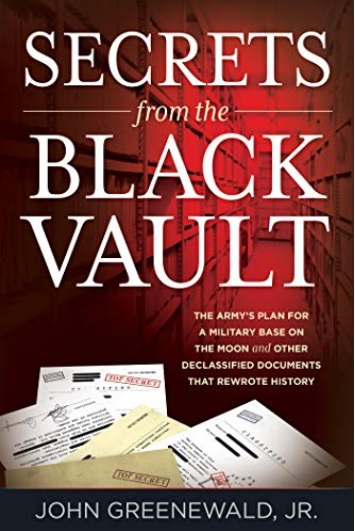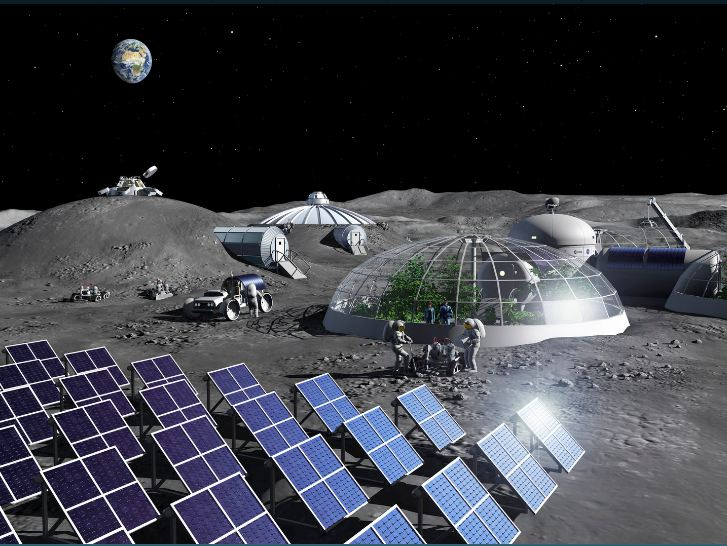Blowing up the moon -- this idea may look like a sci-fi movie plot, but it is a fact that the U.S. government made plans to explode a bomb on moon's "terminator" — the area between the part of the surface that is illuminated by the sun and the part that is dark.
It was a secret mission code-named "Project A119." The project was conceived at the dawn of the space race in the 1960s and designed to be monitored by a U.S. Air Force division located at Kirtland Air Force Base in New Mexico. All the details of this secret mission came to light in a recent report titled, A Study of Lunar Research Flights.

The Explosion of Moon
It is quite obvious that the plan did not work out. But if the U.S. had done, the explosion would have been visible from earth with naked eyes as the military had planned to add sodium to the bomb, which would make it glow and make it visible during the explosion.
John Greenewald Jr., author of the new book "Secrets From the Black Vault: The Army's Plan for a Military Base on the Moon and Other Declassified Documents that Rewrote History" said, "A nuclear bomb on the surface of the moon was definitely one of the stupider things the government could do."
The author also runs a website called The Black Vault, which is the largest civilian archive of declassified government documents including around 2.1 million pages. This webpage includes classified documents on assassinations and other phenomena legally obtained through Freedom of Information Act requests.

Greenewald wrote in his book that the U.S. Air Force devised the moon plot as they wanted to show the Soviets and the entire world that they can dominate space as well. Based on one such declassified document, he said that the plan was never carried out, most possibly due to the its potential to trigger an "unparalleled scientific disaster."
The newly released book also includes that another idea was to build a U.S. Army base on the moon. Codenamed "Project Horizon," its aim was to create a permanent colony for 10 to 20 people. To get the equipment on the moon, the projections called for an average of 5.3 Saturn rocket launches per month between August 1964 and November 1966.
Greenewald said in his book that it might sound "crazy," but when "you get down to it, that's what the military is all about. They want to figure out how to gain a strategic advantage."
The Battle Between the U.S. And Soviet Union

Lieutenant Arthur G. Trudeau, the Chief of Research and Development for the U.S. Army demanded in a 1959 memo that America should beat the Soviets to the moon and if the U.S. can build a permanent base on the moon first, "the prestige and psychological advantage to the nation will be invaluable." The idea had been taken too far, as they designed suits for the landing party and the bulldozers required for the construction. But immense scientific obstacles did not let the plan have any success and there was also the issue of funds, he wrote.
As per the classified report, it was estimated that building a 12-man outpost and keeping it operational for a year would cost the U.S. over $6 billion, which is more than $53 billion in today's dollar value. Greenewald said after collecting all the documents for 25 years, he understood that the possibility of such a massive space missions cannot be ruled out in the future.
Earlier, questions were raised regarding a Pentagon's investigation on unusual space phenomenon, including UFOs. A report also revealed the existence of a $22 million dollar UFO investigation program, called the Advanced Aerospace Threat Identification Program, or AATIP. Later, a Pentagon spokesperson told Greenewald that AATIP had nothing to do with UFOs.
After his book was released, the author told New York Post, "You look at these documents and wonder if this is what they're telling us. Imagine what they're not."
Back to 2020, NASA's Exploration Technology Development Program is currently trying to figure out how to make the moon a suitable place for astronauts and scientists to stay for months. To cherish the dream of colonizing the moon with a permanent human community or robotic industries, one professor at the University of Westminster by name Lewis Dartnell had even proposed the idea of "Moontopia" or a city to be built inside massive hollow tubes formed by lunar volcanic eruptions.









